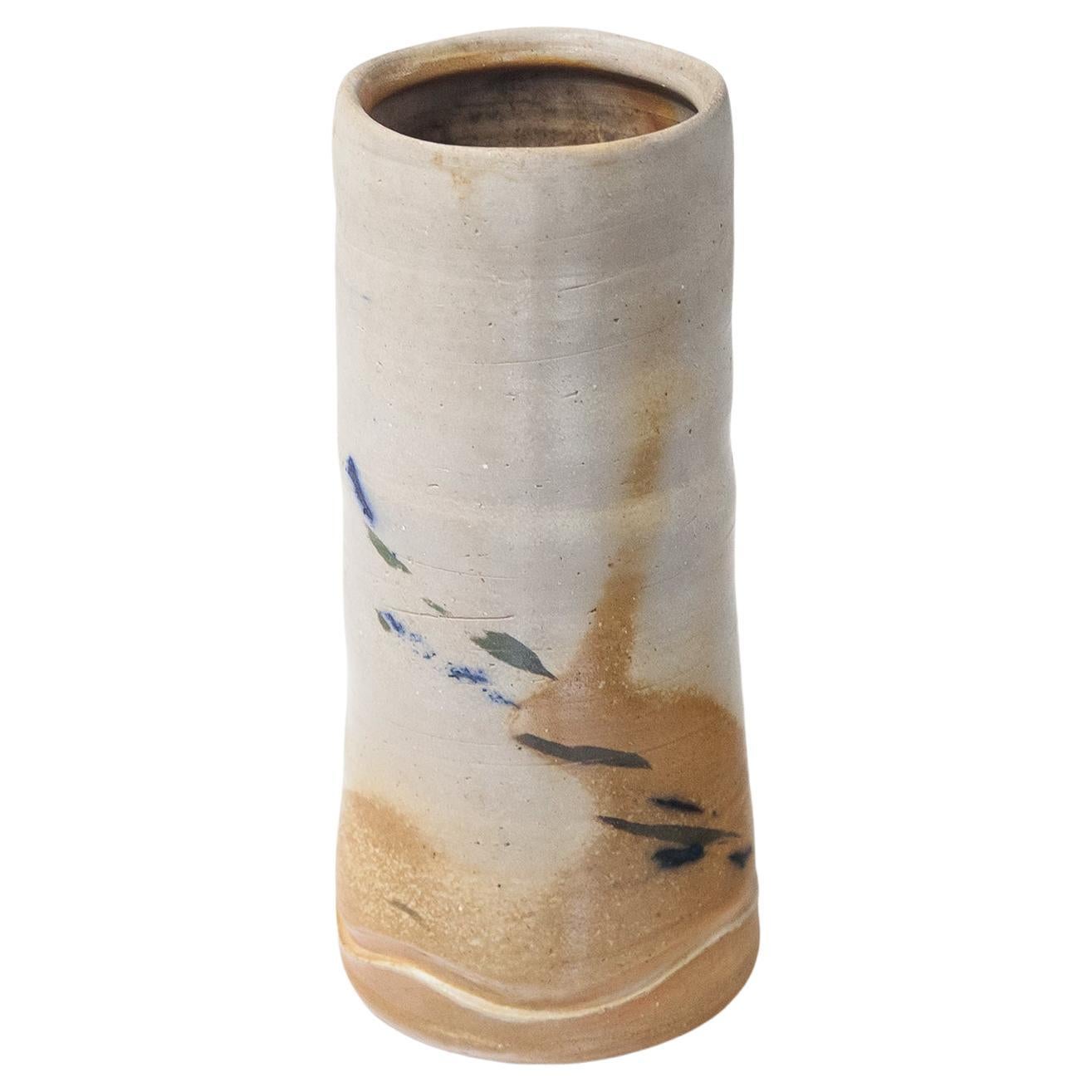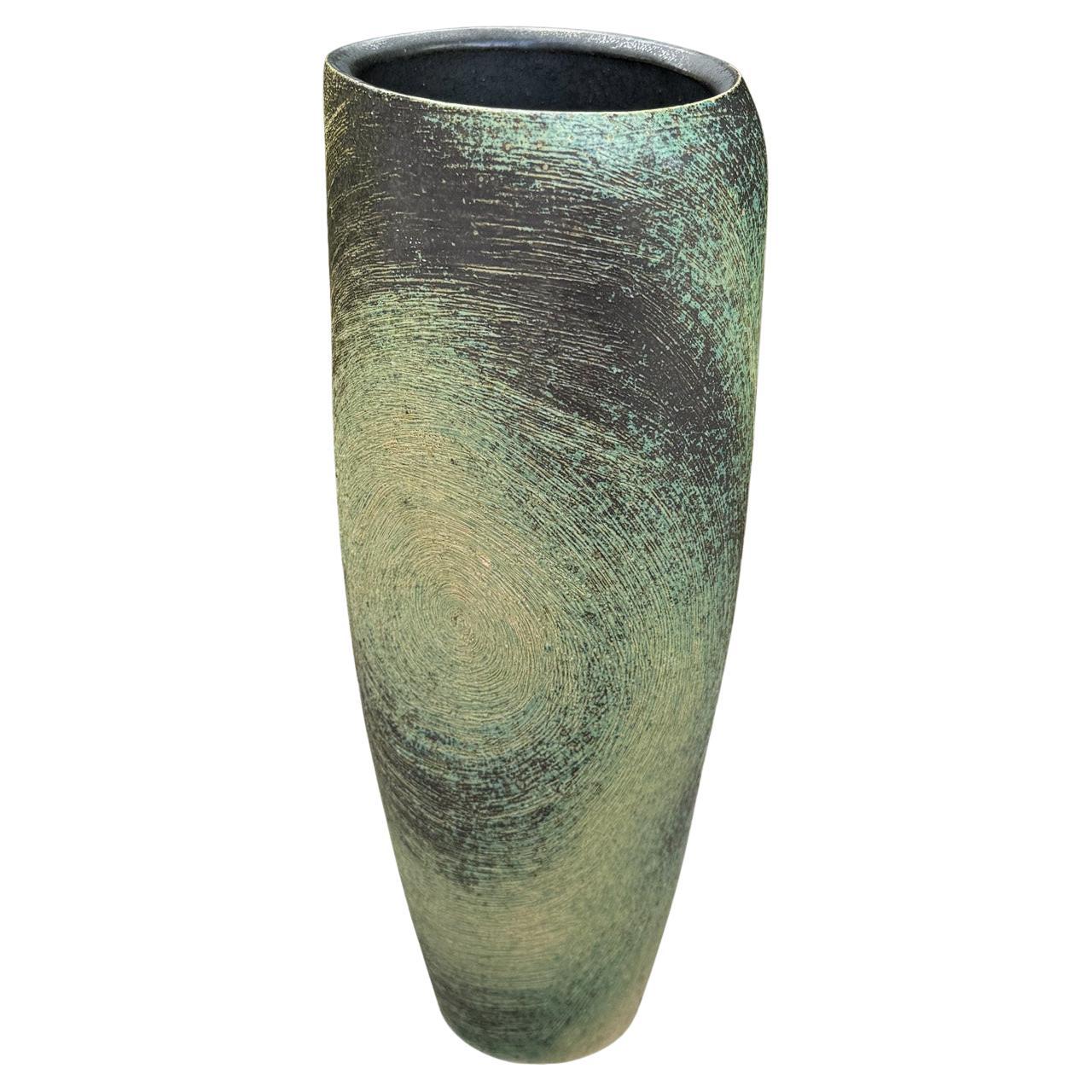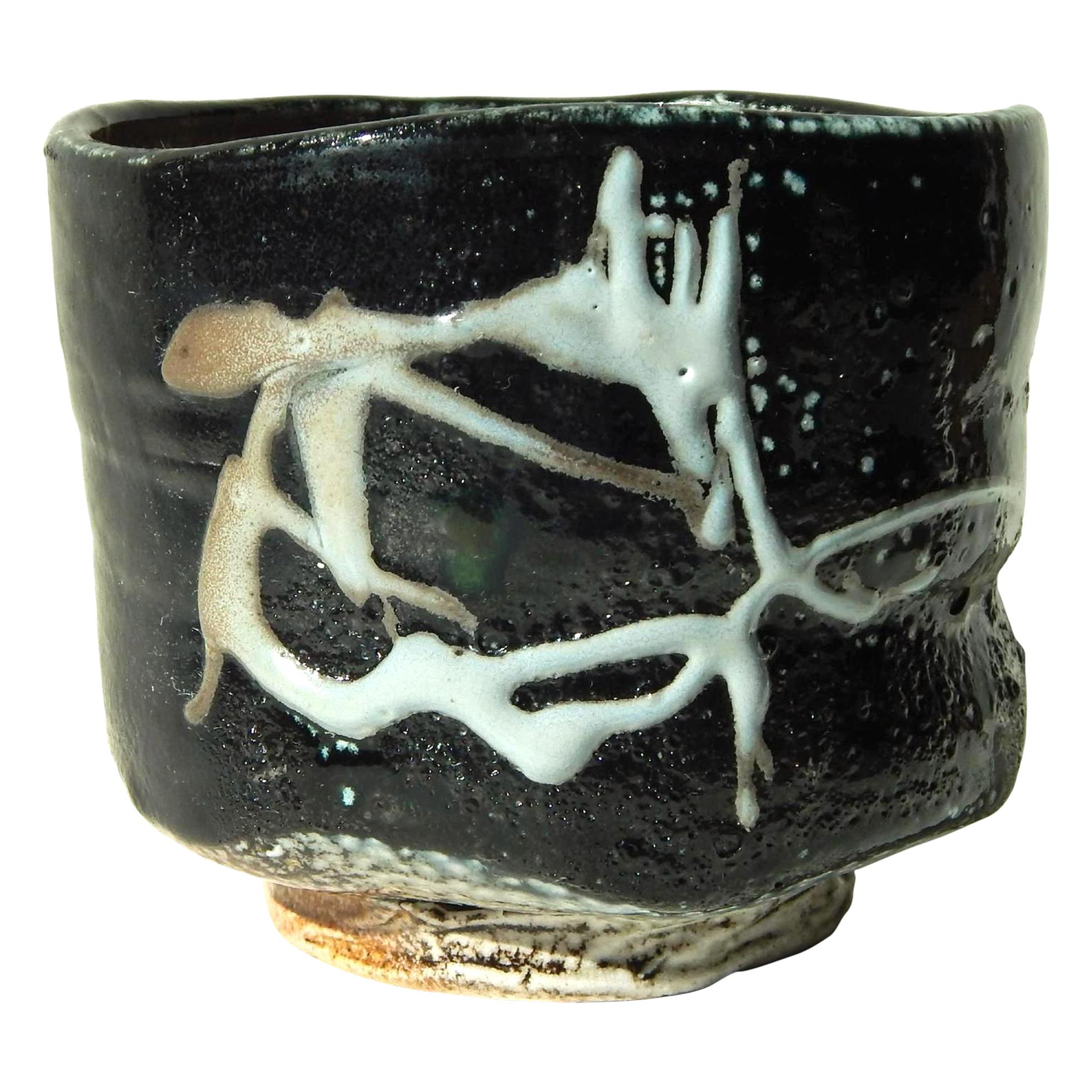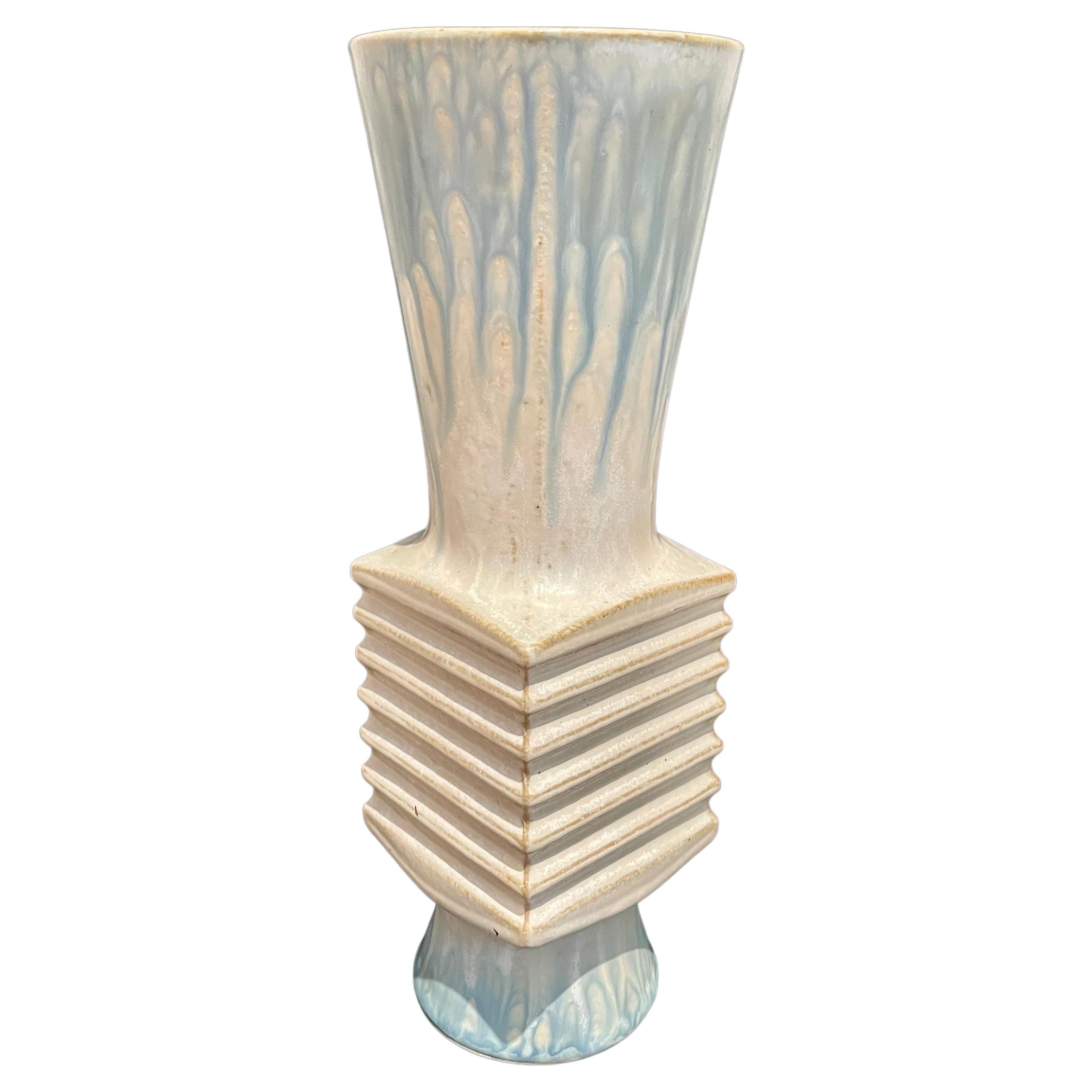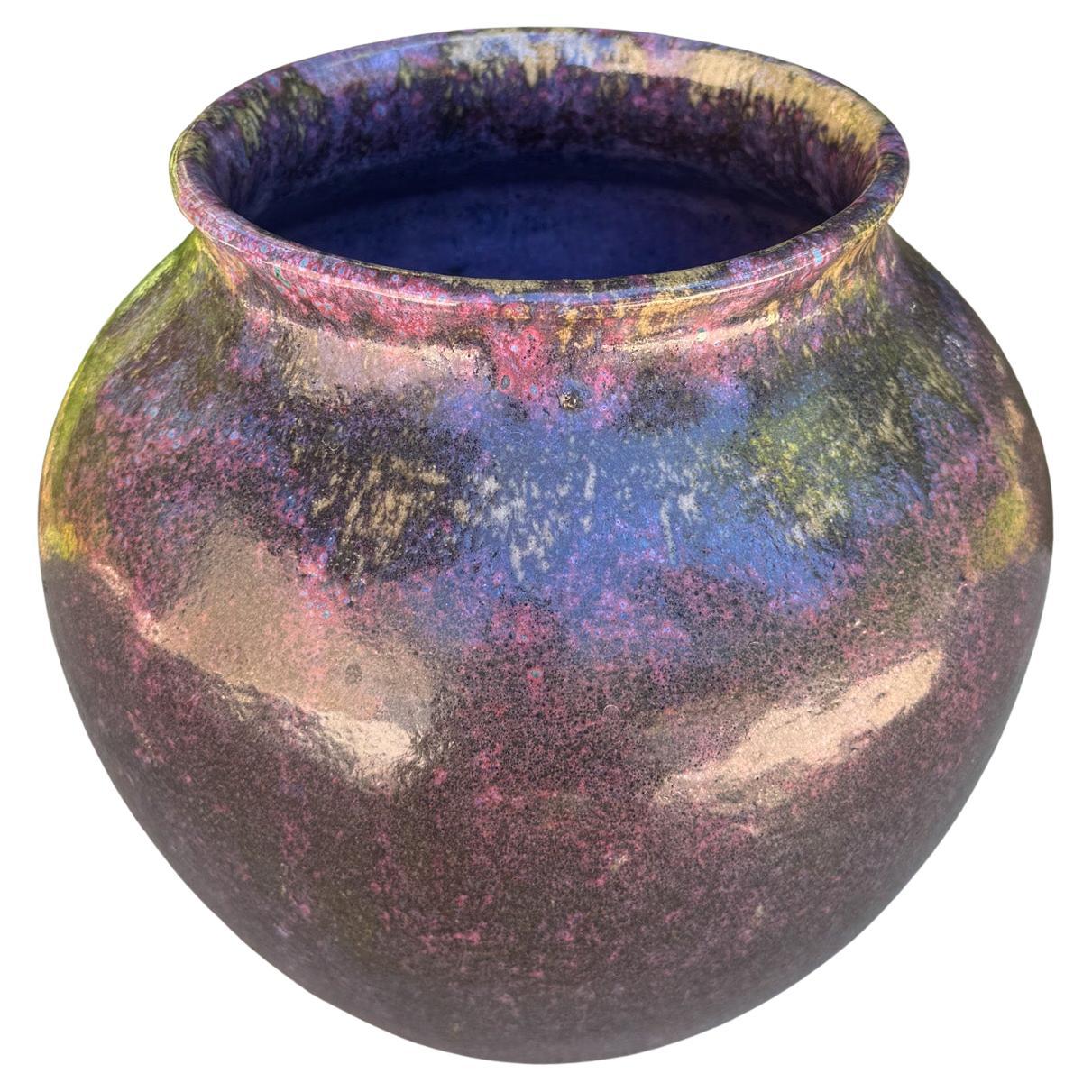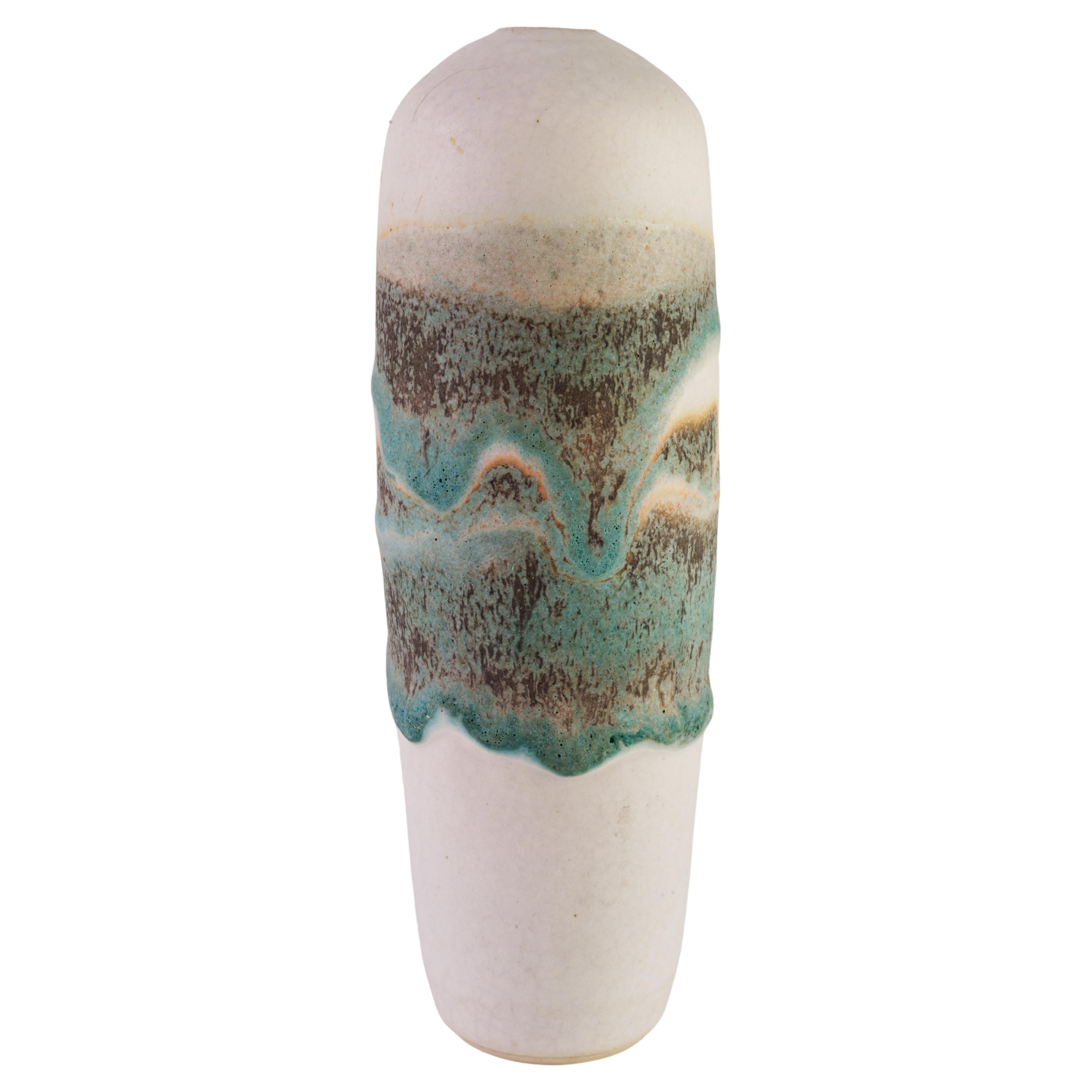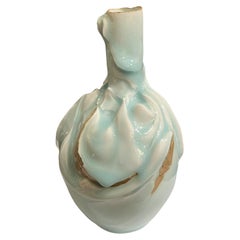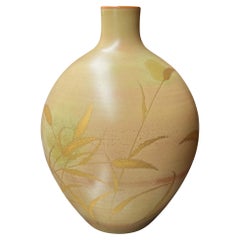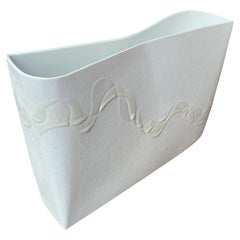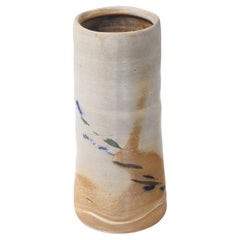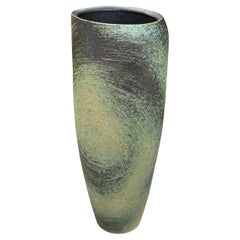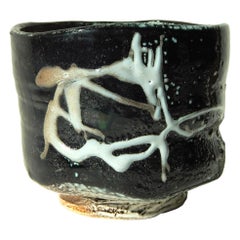Items Similar to Japan, Spectacular Ceramic Vase by Akira Arakawa circa 2000
Want more images or videos?
Request additional images or videos from the seller
1 of 6
Japan, Spectacular Ceramic Vase by Akira Arakawa circa 2000
$1,389.38
$1,736.7220% Off
£1,029.61
£1,287.0120% Off
€1,160
€1,45020% Off
CA$1,896.77
CA$2,370.9620% Off
A$2,110.07
A$2,637.5920% Off
CHF 1,106.13
CHF 1,382.6620% Off
MX$25,784.58
MX$32,230.7320% Off
NOK 14,085.15
NOK 17,606.4320% Off
SEK 13,259.22
SEK 16,574.0220% Off
DKK 8,832.14
DKK 11,040.1720% Off
Shipping
Retrieving quote...The 1stDibs Promise:
Authenticity Guarantee,
Money-Back Guarantee,
24-Hour Cancellation
About the Item
Akira Arakawa, born in 1950 in Hamamatsu and a graduate of Kokushikan University’s Department of Architecture, has carved a unique path in Japanese ceramics. Although trained in architecture, he is a self-taught ceramic artist, renowned for his exceptional mastery of crystallized glazes. This intricate technique demands precise temperature control, reaching extreme levels of 1250°C to 1300°C to melt the glaze components thoroughly. As the temperature slowly decreases, crystals emerge, forming delicate flower or snowflake patterns on the glazed surface. By adding zinc or rutile, Arakawa can manipulate the size and shape of these crystals.
This meticulous process results in captivating works like this deeply carved vase, where blue crystals stand out against earthy backgrounds, creating striking contrasts between crystallized and vitrified areas. Arakawa’s technical excellence has earned him numerous accolades, particularly in Japan’s ceramic competitions and exhibitions.
Arakawa’s work has been featured in prestigious events, including multiple selections for the Nissin Noodle Bowl competition (1997, 1998) and the Ceramic Biennale (1997). In 1999, he was awarded the Education Minister’s Encouragement Prize, further boosting his reputation, which has also been bolstered by appearances on Japanese television. By 2001, he had overseen several ceramic projects, cementing his status in the field.
In 2002, Arakawa founded the Okuyama Art Village, where he continues to teach and mentor fellow ceramic artists. His influence extended further in 2006 when he won the Jury Prize at the National Cultural Festival in Hagi.
- Dimensions:Height: 12.21 in (31 cm)Width: 8.27 in (21 cm)Depth: 7.09 in (18 cm)
- Style:Modern (Of the Period)
- Materials and Techniques:
- Place of Origin:
- Period:
- Date of Manufacture:2000
- Condition:
- Seller Location:PARIS, FR
- Reference Number:1stDibs: LU6491242026312
About the Seller
5.0
Recognized Seller
These prestigious sellers are industry leaders and represent the highest echelon for item quality and design.
Established in 1982
1stDibs seller since 2022
6 sales on 1stDibs
- ShippingRetrieving quote...Shipping from: PARIS, France
- Return Policy
Authenticity Guarantee
In the unlikely event there’s an issue with an item’s authenticity, contact us within 1 year for a full refund. DetailsMoney-Back Guarantee
If your item is not as described, is damaged in transit, or does not arrive, contact us within 7 days for a full refund. Details24-Hour Cancellation
You have a 24-hour grace period in which to reconsider your purchase, with no questions asked.Vetted Professional Sellers
Our world-class sellers must adhere to strict standards for service and quality, maintaining the integrity of our listings.Price-Match Guarantee
If you find that a seller listed the same item for a lower price elsewhere, we’ll match it.Trusted Global Delivery
Our best-in-class carrier network provides specialized shipping options worldwide, including custom delivery.More From This Seller
View AllJapan, Rare Vase by Kanzan Shinkai, born in 1912
Located in PARIS, FR
Vase by Kanzan Shinkai,born in 1912
This vase is a fine example of Kanzan Shinkai's work. It features an intricate design, with raised circular patterns, using contrasting colors suc...
Category
Mid-20th Century Japanese Vases
Materials
Ceramic
Seiyakuji Porcelain Vase with Silver Inlay by Yoji Kato, Japan, circa 1990
Located in PARIS, FR
Seiyakuji Porcelain Vase with Silver Inlay by Yoji Kato (加藤洋二)
This contemporary Japanese vase by Yoji Kato stands 20.5 cm tall and is crafted from Seiyakuji porcelain, renowned for...
Category
Late 20th Century Japanese Vases
Materials
Porcelain
Japan, Porcelain vase by Inoue Haruo 1910- 1975
Located in PARIS, FR
This porcelain vase, created by Inoue Haruo, embodies the elegance and finesse of Kyoto ceramics. Its spherical shape softened by harmonious curves, is topped with a slightly flared ...
Category
Mid-20th Century Japanese Vases
Materials
Porcelain
Japan, Porcelain vase by Shigekazu Nagae, 1991
Located in PARIS, FR
Born in 1953 in Seto, renowned for its long ceramic tradition, Shigekazu Nagae has established himself as one of the emblematic figures of contemporary abstract porcelain. Raised in a family of potters, he learned traditional ceramic techniques from a young age before transcending them with a resolutely modern approach. A graduate of the Seto ceramics school, he perfected his mastery of Ikomi, a porcelain casting technique, which he reinvented by integrating it into an innovative artistic approach. This vase, circa 1991, bears witness to this constant exploration of the material and aesthetic limits of porcelain. Its fluid form, enhanced by delicate undulations, seems to capture an eternal movement, evoking both the softness and tension of the molten material. These undulating patterns, forming a slight relief on the surface, already announce Nagae's current sculptural research, where forms, freed from all constraints, stretch and curve like waves frozen in time.
Nagae's work, although deeply rooted in Japanese tradition, has won international recognition. His pieces are now included in the collections of some of the most prestigious museums in the world, such as the Metropolitan Museum of Art in New York, the Musée National de Céramique in Sèvres, and the Victoria & Albert Museum in London.
In his most recent creations, Nagae continues his quest for the perfect form, transforming porcelain into a living, almost organic material. Each piece, although shaped by the chance of the firing process, is the result of a unique technical mastery and artistic vision, making Shigekazu Nagae an essential pioneer of contemporary ceramic art.
Nagae uses casting, a technique traditionally associated with mass production. However, he diverts this process to shape forms, challenging the limits of the technique.
As with this vase, his creations begin by casting rectangular pieces in slip, which are then left to dry and undergo an initial firing. The joints are then vitrified by the application of glaze, fusing the pieces into a single entity.
He quickly progresses to abstract forms for which he uses the same technique and then suspends the slip sheets in his kiln using...
Category
Late 20th Century Japanese Vases
Materials
Porcelain
Japanese Ceramic Vase with Horses, Somayaki, Japan circa 1830
Located in PARIS, FR
Japanese Ceramic Vase with Horses, Somayaki, Japan circa 1830
This rare two-handled baluster vase from the late Edo period is a typical example of Ōbori Sōma pottery. Its surface fe...
Category
Antique Early 19th Century Japanese Vases
Materials
Ceramic
$1,245 Sale Price
20% Off
Large Signed Studio pottery Japanese vase
Located in PARIS, FR
This is a striking Japanese studio pottery vase, signed but with an unknown artist’s mark, housed in its original box. Likely crafted circa 1980, the vase showcases expert hand model...
Category
Late 20th Century Vases
Materials
Ceramic
You May Also Like
Anagama Horst Kerstan Ceramic Vase Japan Series Germany 1991
By Horst Kerstan
Located in Munich, DE
Unique Minimalist art pottery wood-fired stoneware vase made after his trip to Japan in the first Japanese anagama wood oven in Germany. The huge Vase is made in light brown, ochre y...
Category
1990s German Mid-Century Modern Vases
Materials
Stoneware
Japanese Modernist Ikebana Ceramic Vase, Japan, 20th Century
Located in San Juan Capistrano, CA
Japanese Ikebana Ceramic Vase, Japan, 20th Century.
Category
20th Century Japanese Mid-Century Modern Vases
Materials
Ceramic
$360 Sale Price
20% Off
Don Reitz Studio Ceramic Vase
By Don Reitz
Located in Phoenix, AZ
Large ceramic tea bowl with abstract design.
Signed on the bottom “Reitz”.
Measures: 4.5" H x 5.25" D.
Don Reitz (1929-2014) is recognized as one of the most important and influ...
Category
Mid-20th Century American Mid-Century Modern Vases
Materials
Ceramic
Postmodern Japanese Ikebana Ceramic Pottery Vase
Located in San Diego, CA
Beautiful rare ceramic ikebana vasecirca 1980's great and unique look no chips or cracks beautiful glaze and color.
Category
20th Century Japanese Post-Modern Ceramics
Materials
Ceramic
$300 Sale Price
20% Off
Steven Klinsky Ceramic Vase, 1990's
By Steve Chase
Located in San Juan Capistrano, CA
Steven Klinsky Ceramic Vase, 1990's. Steven Klinsky has worked with designer Steven Chase.
Category
20th Century American Post-Modern Vases
Materials
Ceramic
Organic Modern Charles Focht Vase Lava Glaze Arizona Studio Art Pottery
Located in Clifton Springs, NY
Vintage organic modern cylindrical vase with turquoise and brown lava glaze on cream matte background was handmade by Charles Focht in his Tucson, Arizona studio. The color palette c...
Category
Late 20th Century American Organic Modern Vases
Materials
Ceramic
More Ways To Browse
Crystal Japanese
Noodle Bowl
Japanese Cloisonne Bronze Vase
Large Raku Vase In Ceramic
Large Trumpet Vase
Murano Glass Italy 1910
White Pearl Vase
Zecchin Murano Vases
18th Century German Porcelain Vases
1950s Venini Vase
Austrian Amphora Vase
Bitossi For Raymor
Bitossi Green Vase
Black Terracotta Pot
Blown Glass Bud Vase
Blown Glass Vase Turquoise
Coil Pot
Daum Landscape
